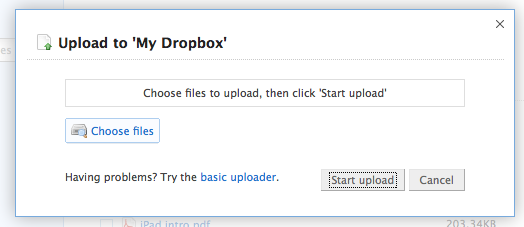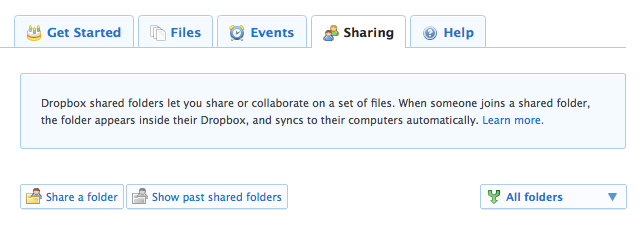Archive for October, 2010
Oct
28
With Halloween just around the corner, there’s no better way to impress fellow party goers with your knowledge of Halloween and Halloween-related topics than by learning about the holiday. But why read print books when there are tons of electronic books (eBooks) out there? At the Pearson Library there are several databases where you can find eBooks. Read the descriptions to figure out which one will be best for you.
Here are some books from E-BRARY you can sink your teeth into that will answer your questions about how this holiday has transformed from a day to celebrate the dead, to being a pagan tradition, to becoming a secular holiday. You can find out the significance of jack-o-lanterns, find films about zombies, and read classics like Dracula by Bram Stoker and Frankenstein by Mary Shelley.
Enjoy! And have a scary, fun, and safe Halloween!

Halloween: From Pagan Ritual to Party Night by Nicholas Rogers
In this fascinating study, Rogers shows how the holiday is a hodgepodge of ancient European pagan traditions, 19th-century Irish and Scottish celebrations, Western Christian interpretations of All Souls’ Day and thoroughly modern American consumer ideals. At its heart, he says, Halloween is a celebration of the inversion of social codes-children have power over adults, marauders can make demands of established homeowners and anyone may assume a temporary disguise. One chapter illuminates Halloween and Hollywood, while a chapter entitled Border Crossings discusses Halloween observance among non-Anglo populations in North America, including Mexico’s “Dia de los Muertos.”*
Zombie Movies: The Ultimate Guide by Glenn Kay and Stuart Gordon
For fans of the gory, grotesque, dark-humor-filled world of horror, zombie films may be the most beloved of subgenres. Kay provides a chronological listing, with summary and review, for more than 250 films from 1932 to 2008. Summaries of each decade, interviews with filmmakers, and other features are interspersed, as is a generous complement of promotional photos. A list of the author’s 25 favorite zombie films, an appendix of “zombie-less” zombie films, and a short bibliography follow. Director and film indexes complete the book.*
 Horror Films by Collin Odell
Horror Films by Collin Odell
Often subject to more cuts at the hands of the censor than a serial killer’s razor, the horror film has a fascinating history, not only as film study but also as a look at what has been considered acceptable for the public to view, and what the state will allow its citizens to see. But for the most part horror films are about entertainment—consistently profitable, eminently enjoyable. From horror cinema’s beginnings in the late 19th century to the latest splatter ilms, from the chills of the ghost film to the terror of the living dead, there is more than enough here to keep fans awake at night. Among the many films discussed are the popular Dracula, Evil Dead, Frankenstein, Halloween, Ringu, Scream, and The Sixth Sense, as well as the more unusual Black Cat, The Living Dead Girl, Nang Nak, Rouge, and Les Yeux sans Visage. The guide also profiles such popular directors as Dario Argento, John Carpenter, Wes Craven, David Cronenberg, Hideo Nakata, and Sam Raimi; as well as cult directors from around the world, including Coffin Joe, Jean Rollin, and Michele Soavi.*
From Demons to Dracula: The Creation of the Modern Vampire Myth by Matthew Beresford
In blood-soaked lore handed down the centuries, the vampire is a monster of endless fascination: from Bram Stoker’s Dracula to Buffy the Vampire Slayer, this seductive lover of blood haunts popular culture and inhabits our darkest imaginings. The cultural history of the vampire is a rich and varied tale that is now ably documented in From Demons to Dracula, a compelling study of the vampire myth that reveals why this creature of the undead fascinates us so. Beresford’s chronicle roams from the mountains of Eastern Europe to the foggy streets of Victorian England to Hollywood, as he investigates the portrayal of the vampire in history, literature, and art.*
 Haunted Halls: Ghostlore of American College Campuses by Elizabeth Tucker
Haunted Halls: Ghostlore of American College Campuses by Elizabeth Tucker
Why do so many American college students tell stories about encounters with ghosts? In Haunted Halls, Tucker takes the reader back to school to get acquainted with a wide range of college spirits. Some of the best-known ghosts that she discusses are Emory University’s Dooley, who can disband classes by shooting professors with his water pistol; Mansfield University’s Sara, who threw herself down a flight of stairs after being rejected by her boyfriend; and Huntingdon College’s Red Lady, who slit her wrists while dressed in a red robe. Gettysburg College students have collided with ghosts of soldiers, while students at St. Mary-of-the-Woods College have reported frightening glimpses of the Faceless Nun.*
* All descriptions and covers of the books have been taken from amazon.com and may have been edited.
Oct
14
You found the perfect citation for your paper in one of the library’s databases but it’s not full-text! Now what? No worries. There are a number of steps you can take to easily access the full-text of most citations you find in library databases. This is the first part of a series that will guide you through those steps. If you are searching the EBSCOhost, ProQuest, or WilsonWeb databases, you probably noticed a link at the end of each citation that looks like this:

This is the library’s open URL link resolver and it tries to link you to another database that happens to carry the article. Pretty cool. When it’s successful, it will lead you to a citation or to the actual electronic journal with the full-text. Most of the time this works flawlessly. If the full-text is unavailable, you will see a page that says: “Sorry, no holdings were found for this journal. Please see additional options below for finding this journal.” More on this in a future blog!
Oct
11

Oh, I get by with a little help from my [Information Systems & Services] friends,
Mmm, gonna try [learning a new computer program] with a little help from my friends…
–With a little help from my friends by The Beatles, remixed by ISS
Sometimes all that you need is a little help from knowledgeable computer friends. Want to learn how to use a Mac? Need a little help with Excel? Want to learn a new software? Not a problem! Every month, computer training classes are offered to CLU students, staff, and faculty free of charge. Past topics include: Mail Merge, Powerpoint, Contribute to Manage Your Website, Creating Your Own Account to Take Classes Online, and more. In October, ISS is offering a three part Excel workshop, basic Word and Entourage 2008, and Flashlight workshops. See the Computer Training page for a more information about the classes.
Oct
7
Has this ever happened to you? It’s 10:58am, you’re in the library printing out a paper for your 11am class, the pages print out, you grab them, and run to your class. Hours later, you’re in your dorm room, looking for your thumb drive…only to realize that you had forgotten it at the library earlier in the day? What about this scenario? You’re at a computer, your email is open to an email with an attachment that you sent to yourself so that you can print out an essay. You look at the email and realize that you forgot to send the attachment. What now?

Instead of saving your essay on your laptop, on a thumb drive, or as an email attachment, you can save all of your documents in Dropbox, where you can sync, share, and access your documents from anywhere using any device (laptop, desktop, smart phone, etc.). There are two ways to access Dropbox, either through a client that you have to download or through a web browser (firefox, chrome, internet explorer, safari, etc.). Watch the video for more information. Dropbox is available for free (2 GBs of storage) or as a paid service (unlimited storage).
Accessing and uploading files through a web browser is easy! Click on the “Files” tab, click on the box that says “Upload”, select your file, and there it is!

Although Dropbox is great for storage, it is also a tool for group essays or other collaborative projects because you can share the document with others, everyone can edit and re-edit, and previous versions of the document are always available (much like a wiki). Sharing is easy too! Click on the “Sharing” tab, click on “Share a Folder”, select what folder and add in recipient’s email.

Midterms are coming up and no doubt will you be turning in an essay fora t least one of your classes. Always have your document available by using Dropbox. Sync, share, and store with ease.
Oct
6
Reading through my RSS reader via Google Reader, I came across two articles that you might find interesting. Enjoy!
1. Career Explorer via LinkedIn: LinkedIn announced a tool that they believe can help current college students figure out their career paths or career potential. Read the article to learn more.
2. Handwriting helps the brain, study finds: Handwriting matters not only in terms of communication, but studies have also found that writing something out (rather than typing it out) is better for our brains. Read the article to learn more.